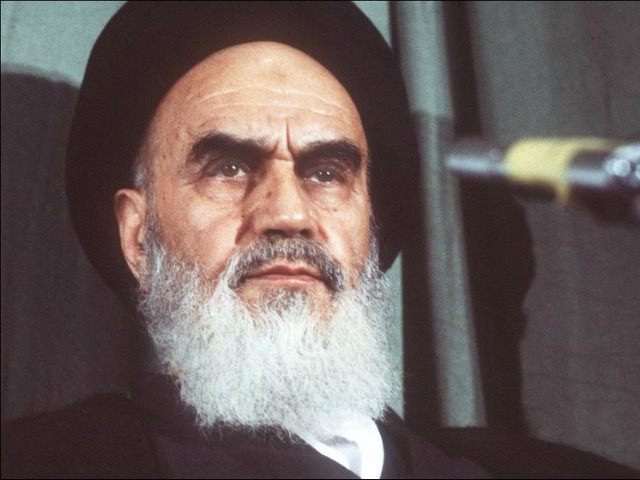Vocativ makes the interesting, and chilling, point that Ayatollah Ruhallah Khomeini—the Ayatollah, the guy Mickey Mouse was flipping off in all those seventies T-shirts—is doing very well on social media for a guy who died when computers were still bigger than dishwashers.
“One of the capital’s most popular Instagram accounts belongs to Ahmad Khomeini, the Ayatollah’s great-grandson, with nearly 100,000 followers,” Vocativ notes. “The account lists his name with the honorific title ‘Sayid,’ which is meant to indicate his direct descent from the Prophet Mohammad. While his father is an Islamic cleric who sports a traditional beard and turban, the young Ahmad is shaven and has a propensity for sports jackets. He especially loves the F.C Barcelona soccer team.”
Ahmad’s Instagram tribute to the old monster swiftly racked up “thousands of likes and hundreds of comments,” while the late Ayatollah’s Facebook page counts 450,000 active followers. The two biggest demographics in this following are young men living in Iran, and young women living in “places with Persian expat communities, like Los Angeles and New York.”
In addition to Ahmad himself, Breitbart News previously reported that an Instagram account dedicated to praising Ayatollah Ruhallah Khomeini was at one point deleted by administrators, but then restored after an outcry from its fans.
Vocativ’s Liraz Tzach has a good handle on why the Ayatollah’s post-mortem social media footprint is significant:
Khomeini led the 1979 Islamic revolution that ousted the country’s Shah, Mohammad Reza Pahlavi, and ushered in decades of diplomatic exile for the Persian state. It is only with recent negotiations over Iran’s nuclear program that the country is finally nearing an end to its isolation, and while many Iranians look to embrace many elements of the western world, there are still strong ties to the radical movement that brought in Islamic fundamentalist rule.
Strong ties to that radical movement are a big problem in a country the Obama administration has been working to set up as a regional hegemon, with nuclear weapons. Young people who don’t remember the Carter era might not realize just how radical, and virulently anti-Western, Khomeinism is.
We have been presented with an image of a modernizing Iran that might have a few rough edges but is moving in a moderate reformist direction, which should be accelerated by increased trade and strong diplomatic ties to the Western world.
It is a sacred belief of internationalists on both Left and Right that classically liberal values are viral and will spread through closed societies faster, the more sustained contact they have with American and European money and culture. The liberalizing power of social media also seems to have been overestimated—it’s been at least as useful to totalitarian ideologues and terrorist recruiters.
The enduring popularity of Ayatollah Khomeini—not as an important perhaps somewhat romanticized figure of the past, but a vital presence in the mind of young Iranians today—is troubling evidence that Iran isn’t reforming itself the way wishful thinkers, and willing dupes, claim it will.

COMMENTS
Please let us know if you're having issues with commenting.